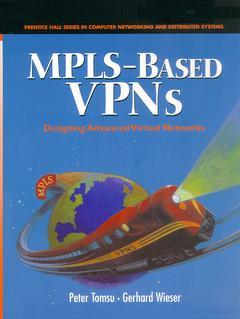MPLS-based VPNs : designing advanced virtual networks
Auteurs : TOMSU Peter, WIESER Gerhard

The network engineers guide to deploying MPLS-based Virtual Private Networks.
- MPLS-based VPNs vs. competing approaches: benefits and tradeoffs.
- Maximizing MPLS security, scalability, stability, and manageability.
- Covers several key enterprise deployment models, including xDSL, cable, mobile/wireless, and dial access.
Peter Tomsu, Senior Consulting Engineer at Cisco Systems, has been involved in the design of major backbone networks throughout Europe, the Middle East and Africa. For eight years, he has been an instructor at Networld+Interop conferences in the US and worldwide. He is co-author of Next Generation Optical Networking (PH PTR). Gerhard Weiser leads a team of Systems Engineers at Cisco Systems, specializing in the design and deployment of large Service Provider backbones and access networks.
1. About This Book.
2. Label Switching Alternatives.
3. MPLS Architecture and Operation.
4. Introduction to Virtual Private Networks.
5. Components of MPLS VPNs.
6. Details of MPLS VPNs.
7. MPLS VPN Applications.
Appendix A: LDP Protocol Structure Examples.
Glossary.
Notes.
Index.
Date de parution : 12-2001
Ouvrage de 200 p.
18x23 cm



